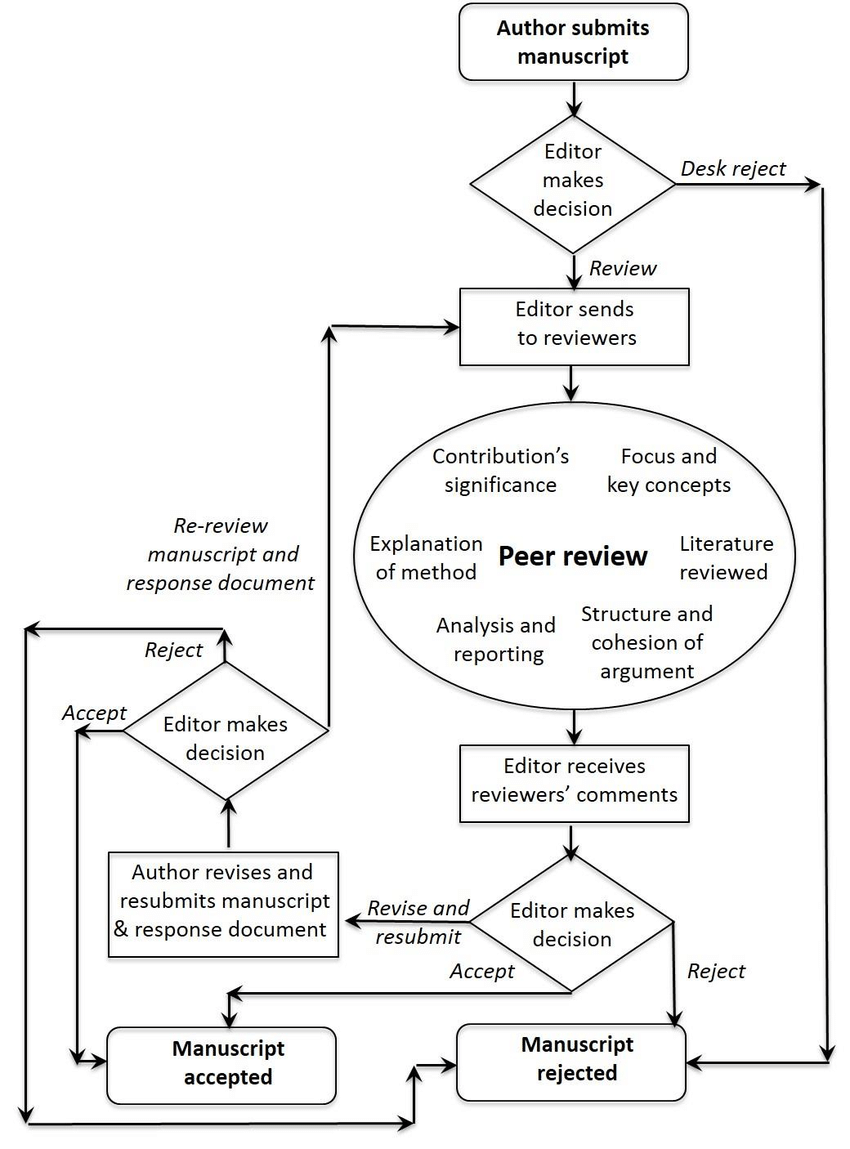Peer-review and guidelines for reviewers
Peer-review and guidelines for reviewers

Rejection rate: 9%
Transfer of manuscript to peer-review and evaluation of the relevant section
-
The entrusted editor will acknowledge (via e-mail) receipt of the manuscript submitted. The manuscript is first screened by an editorial team (Editor-in-Chief and Editorial Committee) who evaluate whether it is appropriate with respect to the journal´s profile and whether it meets requirements for the texts published in the journal. The requirements for the texts published in the journal are defined in a document: Instructions for authors.
-
In the case that the members of the editorial team find that the requirements are not fulfilled, the editorial team reserves the right to reject the manuscript and to not transfer it to the next peer-review process. The author is informed of the resolution of the primary evaluation (i.e. whether his manuscript is referred further to the reviewing process) via e-mail.
-
In the case of rejection of the manuscript submitted the author will be provided with short reasoning. The editorial team also in a primary editorial evaluation consider a section in which propose the publication of the manuscript.
Rules for choice of reviewers
Contributions assessed by the editorial team (editors and Editor-in-Chief) as fitting the scope of the journal are sent in anonymous form to individual independent reviewers.
The reviewers should have relevant experience and expertise with respect to the theme of the manuscript, they should not be personally connected with the author, and the authors and reviewers must not have apparent conflicts of interests. The editors of Annales Scientia Politica cannot hold the post of reviewers for texts submitted for publishing in this journal, but members of the editorial board are allowed to be reviewers.
Guidelines for reviewers
-
The contacted reviewer has to acknowledge (via e-mail) the receipt of the manuscript submitted for peer-review process. By receiving the manuscript the reviewer is bound to meet the given deadline for review and to maintain anonymity of the reviewing process.
-
The review can be sent only to the editorial team and the reviewer cannot verbally or in a written form inform the third party about the result.
-
If the reviewer comes to the conviction that he is not able to ensure anonymity of the peer-review (for example he finds out the identity of the author) or that he comes into a conflict of interests (personal or professional), or he doesn´t feel to be competent enough for reviewing, he will inform the editorial team about these issues and will decline to draw up the review.
-
The reviewers should respect the following rules:
4.1 agree with reviewing only if they are aware of their competence in the given research area and of their ability to prepare the statement in the given time limit;
4.2 respect the confidentiality of the peer-review process and not spread information about it (except necessary communication with editorial staff);
4.3 not misuse information from reviewing process for own profit (or profit of own organisation) or for disadvantage of others;
4.4 declare all possible conflicts of interests or biases concerning authors or the theme of the manuscript;
4.5 draw up an objective and constructive statement;
4.6 avoid personal attacks and disparagement of the author;
4.7 draw up the statement in the time limit, it means in 2 weeks from the delivery of the manuscript (see also section: Publication Ethics and Publication Malpractice Statement).
5. The reviewers work according to a standardized form where they evaluate:
5.1 the appropriateness of including a manuscript for publication (whether a manuscript reviewed meets the criteria of scientific focus of the journal);
5.2 professional level of the manuscript (if it represents the original scientific study or the scientific article);
5.3 scientific contribution of the manuscript (originality of the manuscript, a shift in the scientific knowledge);
5.4 methodological aspect of the manuscript (suitability of methods, clarity of meaning and aims of the manuscript);
5.5 structure and language level of the manuscript;
5.6 formal aspect of the manuscript (text editing and structure, adequate range, the quality of graphic processing or supplements);
5.7 correctness of citations from the literature (relevancy, scope and timeliness of used sources, adherence to the citation standard in the text of the manuscript).
6. The reviewers should make sure that the submitted manuscript meets the requirements of the text published in the journal defined in Publication Ethics and Publication Malpractice Statement. The reviewers also give an opinion on the appropriateness of categorization of the manuscript into a given section or suggest its replacement to another section. Finally, the reviewers attach a brief and factual substantiation of their assessment.
Final evaluation by editorial team
-
With the advice of peer-reviewers the editorial team makes a decision about acceptance or rejection of the manuscript, as well as about necessary (or suggested) changes in the text.
-
The entrusted editor informs the author about this decision via e-mail and sends him also the anonymous reviewers´ comments.
-
The author has the right to appeal against the editors´ decision, the definitive verdict is in the competence of the main editor, who notifies the author in an adequate time period.
Erratum
If any errors are detected in the published material, they should be reported to the executive editor. The corresponding authors should send the appropriate corrected material to the executive editor via email. This material will be considered for publication as soon as feasible.
